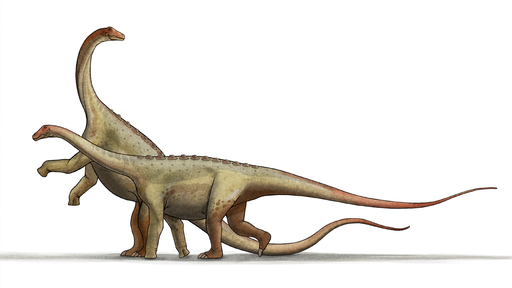The Armored Giant
Saltasaurus was a fascinating sauropod dinosaur that lived during the Late Cretaceous period, approximately 70 million years ago.

| Meaning | Salta lizard [Salta-saurus] |
| Pronunciation | SAL-tah-sore-us |
| When: | Late Cretaceous (about 70–66 million years ago) |
| Where: | South America (Argentina) |
| What: | Sauropod (titanosaurid) |
| Weight: | Estimated around 6–8 metric tons |
| Length: | Approximately 12 meters (39 feet) |
| Diet: | Herbivorous (ate high vegetation like conifers) |
| Discovered: | First described by José Bonaparte and Jaime Powell in 1980 |
Unlike many of its sauropod relatives, which are known for their enormous size, Saltasaurus was relatively small, measuring about 12 meters (39 feet) in length and weighing around 7 tons.
Despite its smaller size, it had a unique feature: a covering of bony armor plates, called osteoderms, embedded in its skin, providing extra protection against predators.
Saltasaurus belonged to a group of dinosaurs called titanosaurs, which were the last surviving group of sauropods.
It had a long neck and tail, and walked on four sturdy legs.
Its teeth were adapted for a herbivorous diet, allowing it to munch on a variety of plants.
This dinosaur’s fossils have been primarily found in South America, particularly in Argentina, where it was first discovered.
Its armored body was a surprising feature for a sauropod and showed that even large, seemingly invincible dinosaurs evolved various strategies for defense.
